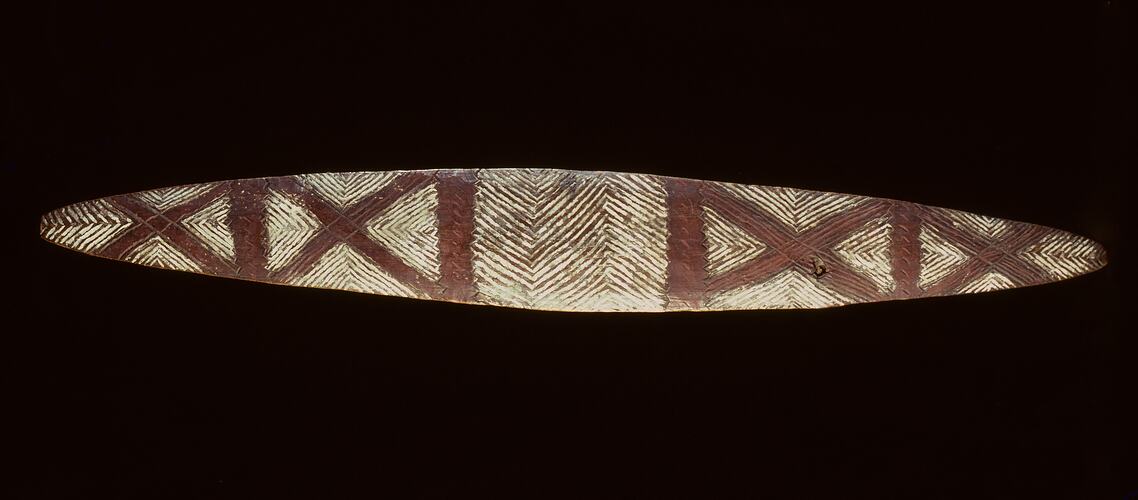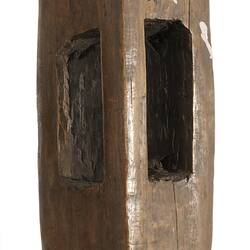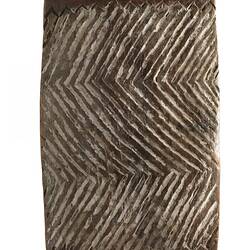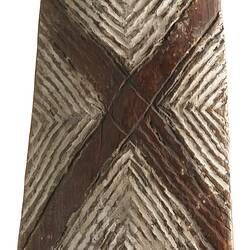Summary
Narrow parrying shields from southeastern Australia are known by Aboriginal names such as Mulga, Murgon, Marr-aga and Kullak. They were used to deflect spears and also to parry blows from wooden clubs in close combat. They are most often made with wood from the ironbark (Eucalyptus sideroxylon) and box (Eucalyptus leucoxylon), however this one is said to be from wattle. Tools made from stone and animal incisors (such as from marsupials) were used to engrave the surface with intricate designs. The history of the 'ownership' of such objects between leaving the possession of Aboriginal people and becoming into the museum's collections is diverse and often obscure. Early collectors acquired objects such as these because it was believed that Aboriginal people were 'a dying race', and this belief and the growing interest in ethnography created a very robust trade in Aboriginal objects in the earliest decades of settlement in New South Wales and Victoria.
Physical Description
An elongated ellyptical shield made from a single piece of hardwood tapering to a point at the ends. The outer surface is incised and infilled with natural pigments. The herringbone pattern is infilled with white pipe clay separated by intersecting lines painted with red ochre and crossing at points to create a diamond design. The handle is carved out on the reverse side.
Significance
This shield is decorated with elaborate and distinctive designs typical of the art of southeastern Australia. The major motif is the incised linear or herringbone patterning infilled with white pipe clay, that is distinctively interrupted with the diamond and rectangular shaped bands across the entire length and painted with red ochre. Documentation accompanying this shield accompanying this shield notes that it was from the 'Lower Yarra' and may have been collected from a member of the eastern Woi-wurrung clans.
More Information
-
Object/Medium
Shield
-
Maker
-
Locality
-
Date Produced
-
Object Measurements
880 mm (Length), 120 mm (Width), 90 mm (Height)
-
Keywords
-
Collection Names
-
Type of item
-
Discipline
-
Category
-
Collecting Areas








